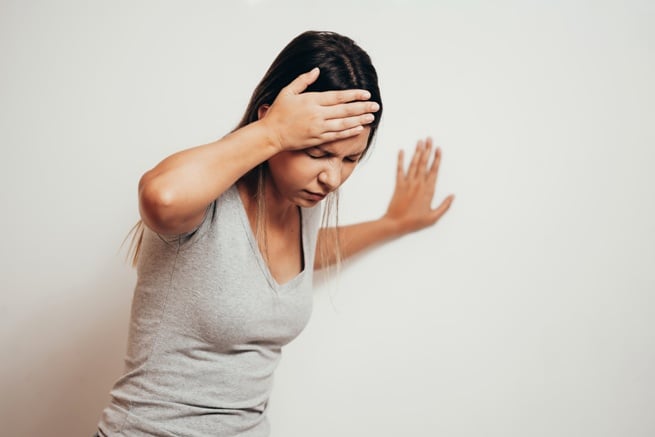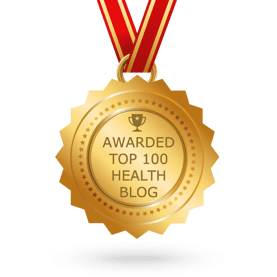
Postural Orthostatic Tachycardia Syndrome, or POTS, dizziness upon standing, is often called “the invisible illness” – and nearly every symptom is subjective. It’s important to remember that although dizziness is the trademark symptom, POTS does a lot more than just make someone dizzy.
Postural Orthostatic Tachycardia Syndrome (POTS) is largely misunderstood by nearly everyone, including many doctors. So far, only a small number of Functional Medicine physicians are probably aware and educated about POTS.
What Is POTS Syndrome?
POTS is a form of Autonomic Nervous System (ANS) dysregulation or malfunction that affects the flow of blood throughout the body, thereby causing orthostatic hypotension mostly manifesting as dizziness when standing up. Technically, someone has POTS if their heart rate increases by 30 beats per minute or their heart rate is greater than 120 beats per minute within 10 minutes of standing up. Needless to say, this can be an alarming reaction for someone for something as simple as getting out of a chair.
The autonomic nervous system regulates involuntary actions that allow the body to function, such as breathing, heart rate and digestion. Upon standing, a normal reaction is that a significant amount of blood automatically falls to the lower body. Autonomic reflexes ensure that blood gets appropriately diverted and better distributed to the upper body by adaptive mechanisms such as skeletal muscle tone, smooth vessel wall muscular tone, heart rate, and pumping force responses in the heart.
POTS Syndrome is the result of dysautonomia, a range of conditions that affect the autonomic nervous system. In POTS, there is an increase in heart rate and light-headedness on standing, as well as exercise intolerance, fatigue, and a multitude of other symptoms. POTS may be so severe that even normal everyday chores that we usually take for granted such as bathing or walking may be severely limited.
Although anyone can be affected by postural tachycardia syndrome, it is by far the most prevalent among women in their teens, twenties, and thirties. There is a wide spectrum of POTS-like disorders that fall under the umbrella of dysautonomia, several of which do not have an increase in heart rate.
Postural Tachycardia Syndrome (POTS) Symptoms Include:
POTS has shown a wide range of symptoms including headaches, nausea, abdominal pain, chronic pain, chest pains. palpitations, fatigue, shortness of breath, insomnia, brain fog, sweating abnormalities, weakness, bladder dysfunction, and tremors.
Fatigue (95.2%) is the most notable symptom, which isn’t surprising considering the commonality of POTS and Chronic Fatigue Syndrome (CFS). Dizziness when standing is the second most common symptom (95.2%), followed by brain fog (93.1%), and heart palpitations (92.0%).
With fatigue, dizziness and an array of other symptoms, POTS can be very disruptive to daily life, and proper diagnosis is critical.
DIagnosis of POTS
POTS is typically diagnosed through the tilt table test- a test that is consistently positive in cases of Postural Hypotension. With this test, patients are strapped to a table which is tilted to simulate the process of standing up by forcing blood from the upper body to the legs. Tilt tables aren’t available at all hospitals, so some doctors diagnose POTS by monitoring changes in heart rate and blood pressure while the patient moves from lying down to standing up.Various medical specialists can diagnose POTS, but by virtue of the Tilt Table test cardiologists most commonly diagnose the disease.
Treatment of POTS
There are three primary treatments for primary POTS; diet, exercise, and medication. Diets that are high in sodium and low in gluten have proven to be effective in some patients. Exercise has also been proven to help patients address some of the symptoms they experience. Finally, several medications – and combinations of medications – can help to relieve POTS.
Diet
Initially, the diet will center on increasing fluid and salt intake to increase circulating volume. Lower carbohydrate and smaller sized meals are also recommended to prevent pooling of blood in the stomach vessels. Some patients may be sensitive to caffeine and it should be limited, and alcohol and energy drinks should be avoided, as they can worsen orthostasis and have been associated with triggering POTS episodes. Finally, those with GI symptoms should consider gluten and dairy intolerance. By cutting these things out of your diet in a “trial,” you’ll be able to see if they’re having an impact.
-Fluid Intake
Fluid intake has been shown to decrease the chances of feeling faint in response to standing and has been proven to be of benefit in patients with orthostasis. Dehydration should be avoided and will almost certainly worsen symptoms of POTS Syndrome. In general, POTS patients should aim to drink more than 2 liters of water per day.
-Increasing Salt Intake
The role of salt in the treatment of POTS is important. With the exception of kidney/heart failure patients, most doctors would recommend an effort to increase dietary salt for POTS patients, usually by around 2-4g/day. If necessary, as per the doctor’s treatment plan, salt tablets may need to be used.
Exercise
Exercise is generally recommended for all POTS patients and is a key part of any treatment strategy. Physical deconditioning is an important aspect of POTS and can worsen symptoms. This deconditioning has been highlighted by studies that show POTS patients have lower oxygen uptake during exercise compared to healthy individuals. POTS patients also have smaller heart chamber sizes and lower heart muscle mass, likely resulting from less activity. Importantly, studies have shown that endurance exercise training is an effective treatment for POTS and can result in substantial improvement in symptoms. Exercise can increase cardiac and skeletal muscle mass and improve overall cardiovascular fitness. This in turn will improve the body’s ability to cope with standing, and other stressful situations in POTS.However, exercise may be challenging for two reasons. First, patients feel too tired to exercise, and second, patients may feel fatigued and more symptomatic after exercising, often lasting days. Despite this, it has been proven that even if done slowly, and time taken to build up the exercise level, there will be significant improvement. The simple fact is that patients who exercise are more likely to do better than those who don’t.
Muscle Tensing
When we stand, due to the effects of gravity blood tends to pool in the lower extremities. In POTS, the normal mechanisms that counter this are dysfunctional resulting in reduced return of blood to the heart and the upper body, leading to dizziness. It has been proven that in some patients, tensing of the leg muscles when standing can stabilize the circulation and improve orthostatic intolerance.
Routine Changes
Symptoms of POTS may have significant impact on quality of life and things that are taken for granted may now become a challenge. Simple routine changes may be helpful. Often POTS patients have worse symptoms in the morning, and it may be advisable to schedule events for the afternoon. Things such as taking extra time to stand up, and also sitting down in the shower may be helpful. When symptoms are prominent such as dizziness or a faint feeling, it is wise to lie down and elevate the legs to minimize risk of trauma in the event of almost passing out or fainting.
Prescription Medication Treatments for POTS
A number of medications have proven to be partially effective at treating POTS Syndrome symptoms, although the effectiveness of a given medication can be affected by the type of POTS Syndrome diagnosed. None of the following medications has proven curable, but this is a list of commonly used medications for POTS: Benzodiazepines, Beta Blockers,Clonidine, Desmopressin, Erythropoietin, Fludrocortisone (Florinef), Ivabradine, Midodrine, Octreotide, Pyridostigmine (Mestinon) and Selective Serotonin Uptake Inhibitors (SSRIs).
Conclusion
With this often misunderstood illness, more comprehensive testing is needed for underlying causes contributing to a vast array of symptoms. As a functional medicine physician, I find that the largest majority of POTS symptoms are often due to Adrenal Fatigue, unless the patient suffers from other identifiable disorders like anemia, Neuroendocrine tumor or a vascular Matrix Disease like Ehlers Danlos.
.png?width=305&height=132&name=NIHAlogoBLUE_3_transparent%20(2).png)

